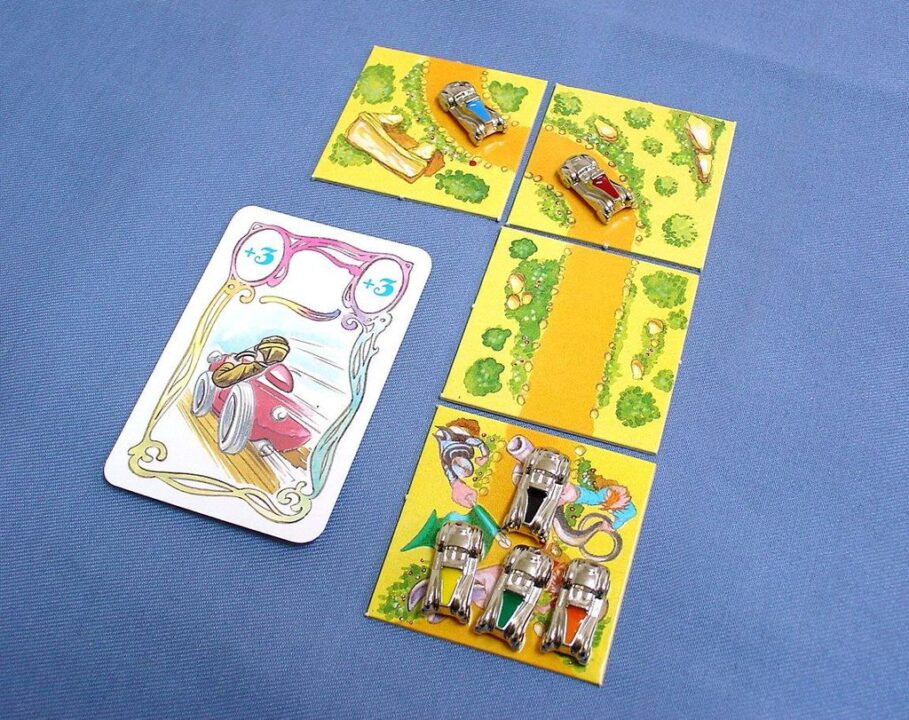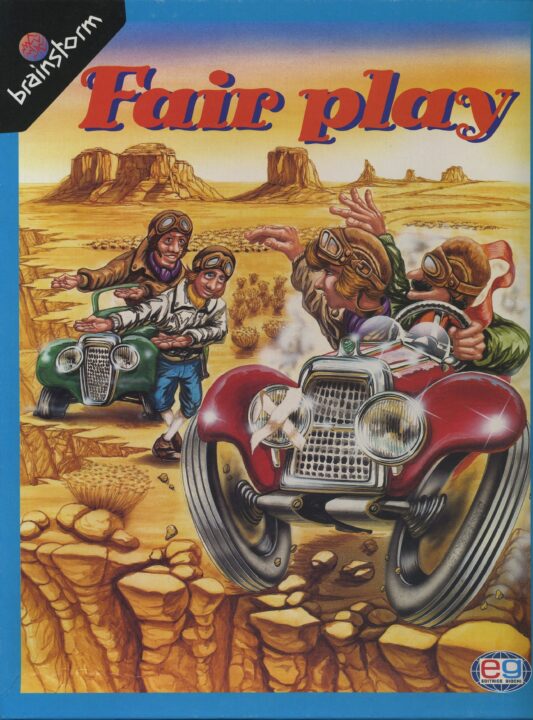Welcome! This is my honest review of Fair Play, a game that’s rolled out on my table more times than I care to admit. My friends and I have put it through the wringer—testing its balance, artwork, strategy, and whether it’s worth fighting over the last chip. So, grab your snack of choice and let’s see if this one deserves shelf space or a home in the re-gift pile.
How It Plays
Setting up
Lay out the board in the middle of the table, and give each player their colored pieces and a set of starting cards. Shuffle the main deck and put it where everyone can reach. Don’t forget to put the score tracker nearby! If you do, someone will sulk later about lost points. (It was me. I sulked.)
Gameplay
On your turn, draw a card and choose an action: play a card for its effect, trade with another player, or move on the board. Cards let you bend the rules in small ways, but you can’t just get a win by blind luck. Everyone’s schemes will crash at least once and that’s half the fun. You’ll need to outsmart others and keep your cool when your plan totally falls apart. Trust me—my plans always fall apart.
Winning the game
The game ends when the deck runs out or someone hits the max score on the tracker. Count up the points from cards and board position. The player with the most points wins and gets bragging rights for the next week. If you lose, remember: the true victory is not flipping the table.
Want to know more? Read our extensive strategy guide for Fair Play.
The Delicate Art of Game Balance and Fair Play
I once got into a heated argument during game night because of a card that let Steve skip my turn. Steve is my best mate, but you should’ve seen my face! Right then I realised something: nothing ruins a solid board game faster than a broken sense of balance. Game balance is all about making sure every player has a fair shot at winning. If one player runs away with the lead because they got lucky or picked the only good character, that’s not fair play. It’s just a race to see who can pull the luck lever first.
“Fair Play”—the game and the idea—knows that players want an even playing field. Balance is built right into Fair Play’s rules. No player gets stuck with a bad starting hand, and every rule punishes game-breaking moves. I never once felt like I lost because the game wanted me to lose. I felt like I lost because, well, I just made a dumb move (or Steve made a smart one for once).
Some games try to fix problems with balance by adding house rules, but I never had to do that with Fair Play. If you’re tired of spending your cash on games where dice rolls rule your fate, Fair Play was made for you. It rewards smart choices, not dumb luck, and that makes for a better night for everyone.
If you love plotting and outsmarting friends over a board, you’re in luck—next, I’ll share how Fair Play ramps up player interaction and strategy. Buckle up, folks.

Getting In Each Other’s Heads: Player Interaction and Strategy in Fair Play
Okay, let me start with this: if you play board games for the epic table talk, Fair Play will not let you down. I played with my usual crew, and by round two, Pete was scheming so hard you’d think he was plotting world domination over chips and soda. Player interaction happens on almost every turn. You can block, bargain, and even pull some sneaky moves—though the game keeps things civil (I only lost one friend, and even he came back for dessert).
Strategy in Fair Play isn’t just about thinking five steps ahead. You also have to read the room. Sometimes, you need to focus on your own plans and other times, you have to put a stop to someone getting too comfy in the lead. The mix of open information and hidden goals creates just enough tension to make you sweat, but not enough to make you panic text your therapist.
What I love most is that Fair Play actually rewards clever plays—not just lucky rolls. I’ve seen quiet players suddenly pull big surprise moves, and loudmouths (me) get outfoxed. You have room for creative plays, but you can’t win without paying attention to others. It’s the kind of game where half the fun is convincing other people that you’re absolutely no threat at all. Spoiler: I am always a threat.
Before you start planning your next big player bluff, let’s talk about something shinier—yep, it’s time to get into the bits and art of Fair Play!
Component Quality and Artwork in Fair Play: Worth the Price?
Let’s talk about what you actually get in the Fair Play box—besides the heated arguments over who cheated each round. Honestly, I’ve seen cheaper games throw in little plastic tokens that feel like they came out of a vending machine. Not Fair Play! Here, the tokens have a satisfying weight, and they don’t chip if you get a little too competitive (which, in my house, happens by round three).
The game board itself? It’s bright, colorful, and laid out in a way that even my uncle with his questionable glasses can follow what’s happening. I love the artwork—each card has these quirky designs and cheeky little details. Somebody had fun with the illustrations; you can tell. The style keeps the mood light even when someone accuses you of sneaky under-the-table deals. I may have spent longer than I’d like to admit just admiring the silly character drawings between turns.
One thing I noticed, though: if you play Fair Play a lot (and you might), the cards start to feel a bit flimsy. They’re not the thinnest in my collection, but after a month of weekly matches, I spotted a little wear. Nothing sleeving can’t fix, but it’s worth mentioning. For the price, though, you get quality that stands up to most game night disasters—drinks, snacks, and all!
All that said, let’s see if you’ll want to keep pulling Fair Play off the shelf, or if it ends up as a coaster—next up, replayability and how steep that learning curve actually is!
Does Fair Play Bring You Back for More?
If you’re like me, you want a game that doesn’t just collect dust after one go. Fair Play delivers on replayability way better than my last attempt at making sourdough. Every session felt fresh thanks to the many paths to victory and how those paths change with the players. I played with my competitive cousin, my ‘just here for snacks’ friend, and even my neighbor who thinks Monopoly is the peak of board gaming. Each game felt just a bit different, which I loved.
The learning curve? Not too steep. Fair Play is easy to teach, even to people who think a meeple is some sort of sea creature. The rulebook is clear and pretty short, so you won’t spend an hour explaining the rules as everyone slowly regrets showing up. Most folks at my table had the basics down within one round. There are layers of strategy, sure, but you don’t need a PhD in gaming, just a bit of common sense and a pinch of cunning.
Is Fair Play perfect? No game is, but with its solid replay factor and approachable rules, I can honestly say it’s worth a spot on your shelf. If you’re a group that likes to actually finish a game night before midnight, Fair Play gets my stamp of approval. Unless you only like games that take longer than a family holiday—then maybe look elsewhere.
Conclusion
So, that’s my full review of Fair Play! Honestly, I had a blast with this one. The game feels balanced, so nobody gets a pity win or steamrolled by pure luck. The artwork is charming, the components won’t fall apart after a few games, and teaching new folks is a breeze. My regular game group actually argued over who got to take it home—always a good sign! Sure, some cards will look a bit ‘loved’ after many rounds, but that just means you’re playing it right. If you want a game where skill matters more than the roll of the dice, Fair Play delivers. Thanks for reading, now go grab some snacks and get your game on!


